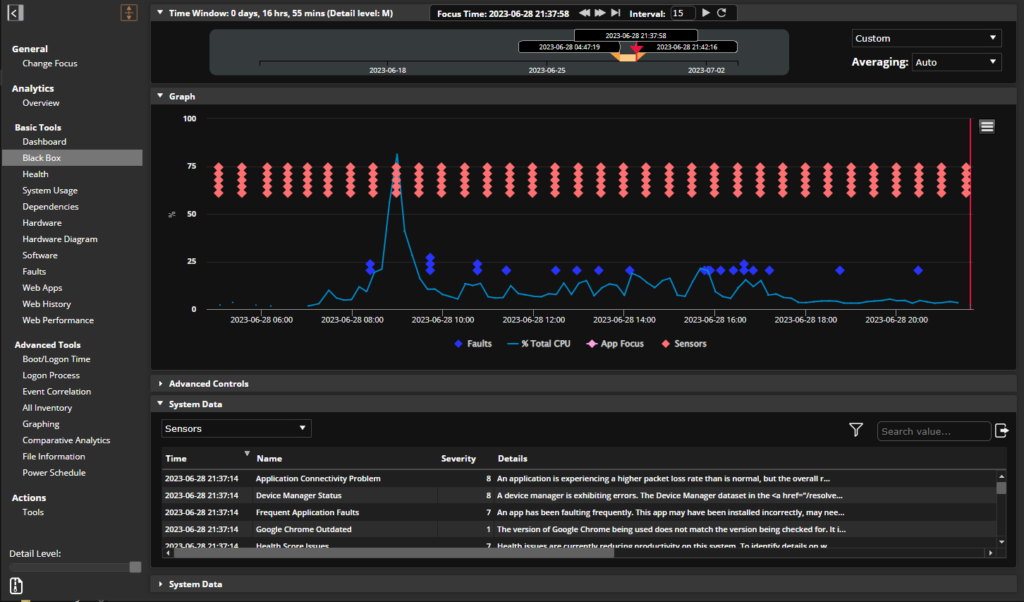Microsoft Guest Blog: SysTrack and Windows Modernization Planning
Hi, I’m Divy Sharma with Microsoft Services, and I’ve been working with Lakeside Software’s SysTrack product for quite some time. SysTrack has proved to be extremely valuable for Data Center Modernization assessments and now for Windows 10 planning. Personally I’ve had the most experience helping customers understand their enterprise infrastructure and application portfolios, and assisting them with the complex process of determining what platforms and pathways forward are available to them to optimize their core infrastructure.
Legacy data center systems and workloads are a massive problem in the enterprise. Because these systems have a tendency to evolve naturally over time without centrally structured planning it can be difficult to determine some of the basic needs these systems are addressing. The key for all of the decisions necessary to migrate workloads and users is context. This requires answers to questions such as: What application connections are necessary? What resource consumption do we expect for applications? What kind of user experience do people get today? How many backend dependencies does this application require?
These questions led us to conclude that we really needed a robust way of collecting detailed, continuous operating metrics and usage details to understand how best to help our customers with their pathway forward. With numerous black box servers, unknown assets, and supporting systems distributed geographically across numerous physical locations it would be a difficult proposition to get a complete inventory, much less understand the characteristics of the existing workload and plan how to migrate it. With some of the existing tools in our portfolio we were able to get pieces of the information we needed, but what was missing was the actual activity and capacity analysis for forecasting costs and understanding the purpose of the systems. This is where SysTrack reporting filled in the gaps for us.
The addition of the Kits concept has greatly streamlined the process of gearing up for a DCM project; because the DCM content that was co-developed with Lakeside is made up of a large number of reports and dashboard content this makes reporting of the data as straightforward as the collection.
With Windows 10, Microsoft has started providing the next level of enterprise productivity, security, manageability and advanced threat detection. Solutions such as Enterprise Mobility Suite (EMS) offer leading-edge capabilities for identity management, device management, application management and provides enterprise-grade security. Additionally, new Windows 10 features such as Device Guard, Enterprise Data Protection and Microsoft Passport disrupts modern cyber-threats with revolutionary security. I have found SysTrack extremely valuable in assessing an organization’s current state of readiness for adopting these features. We have been able to get answers to questions such as – which devices are ready for Windows 10 migrations, which devices have TPM chips for using Windows 10’s advanced features, which devices are capable of supporting virtualization through Hyper-V to protect system memory and kernel-mode apps/drivers from malicious tampering, what is the device profile (desktops/laptops/tablets/touch-enabled devices/VDIs), and, what desktop/web applications are used in the enterprise, by whom, how often and what’s the performance portfolio of these workloads.
I really like the fact that SysTrack can work either as an on-premise solution or purely via Azure cloud. It can work on machines on your Active Directory Domain or on BYOD devices that contingent staff may bring in. It can easily help develop a workload’s profile – CPU loads, memory utilization, disk I/Os, network interaction with other servers – all with minimal impact to host performance. Moreover, it can help aggregate data over thousands of devices, laying a strong foundation to develop data-driven models for multiple scenarios, such as, Windows 10 deployment planning, Application Workload Assessment and Migration planning, Azure migration assessment and cost planning, etc.
For us the real mark of success is what happens after the migration is completed, and this is where the SysTrack data makes the largest difference. Previously it was difficult to really come up with a proof point to demonstrate that the user experience in the environment is quantitatively better than what end users used to get. With the comprehensive reporting in tools like Enterprise Visualizer it’s now possible to connect the starting user experience before the improvements with the steady state experience after all of the optimization and workload migration has taken place, proving success.
Really this gets to the heart of a broader key for ensuring that end users get the best possible experience: point of interaction telemetry. As IT’s role evolves it’s critical to have measures in place to track the performance of the various services that make up the EUC environment. By allowing SysTrack to track things like Office 365 adoption, system performance, and application consumption it’s now possible to track delivered services in a unified way. This makes Lakeside an ideal partner as Microsoft grows its incredible portfolio of traditional and cloud based services. Windows 10 in many ways is the start of a transformation for Microsoft’s offerings, and I think the more service driven direction for IT in the enterprise will benefit from it and Azure offerings tremendously.
Keep an eye out for more posts on Windows modernization and how Microsoft can help deliver the best possible end user experience to your environment.
Subscribe to the Lakeside Newsletter
Receive platform tips, release updates, news and more



